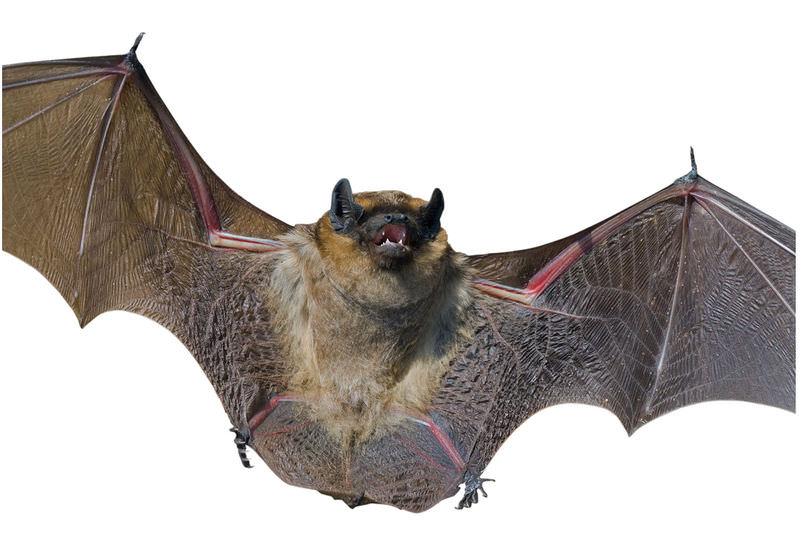10.20: Mammal Overview
- Page ID
- 14173

What do you have in common with a bat?
Both humans and bats have body hair, and both humans and bats can nurse their young. These are both characteristics of mammals, the class that both bats and humans belong to.
Characteristics of Mammals
What is a mammal? These animals range from bats, cats, and rats to dogs, monkeys, elephants, and whales. They walk, run, swim, and fly. They live in the ocean, fly in the sky, walk on the prairies, and run in the savanna. There is a tremendous amount of diversity within the group in terms of reproduction, habitat, and adaptation for living in those different habitats.
What allows them to live in such diverse environments? They have evolved specialized traits, unlike those of any other group of animal. Mammals (class Mammalia) are endothermic (warm-blooded) vertebrate animals with a number of unique characteristics. In most mammals, these include:
- The presence of hair or fur.
- Sweat glands.
- Glands specialized to produce milk, known as mammary glands.
- Three middle ear bones.
- A neocortex region in the brain, which specializes in seeing and hearing.
- Specialized teeth.
- A four-chambered heart.
There are approximately 5,400 mammalian species, ranging in size from the tiny 1-2 inch bumblebee bat to the 108-foot blue whale. These are distributed in 29 orders, 153 families, and about 1,200 genera.
There are three types of mammals, characterized by their method of reproduction. All mammals, except for a few, are viviparous, meaning they produce live young instead of laying eggs. The monotremes, however, have birdlike and reptilian characteristics, such as laying eggs and a cloaca. An example of a monotreme is the platypus with its birdlike beak and egg-laying characteristics. The echidnas are the only other monotreme mammals. A second type of mammal, the marsupial mammal, includes kangaroos, wallabies, koalas and possums. These mammals give birth to underdeveloped embryos, which then climb from the birth canal into a pouch on the front of the mother's body, where it feeds and continues to grow. The remainder of mammals, which is the majority of mammals, are placental mammals. These mammals develop in the mother's uterus, receiving nutrients across the placenta. Placental mammals include humans, rabbits, squirrels, whales, elephants, shrews, and armadillos. Dogs and cats, and sheep, cattle and horses are also placental mammals.
Mammals are also the only animal group that evolved to live on land and then back to live in the ocean. Whales, dolphins, and porpoises have all adapted from land-dwelling creatures to a life of swimming and reproducing in the water (Figure below). Whales have evolved into the largest mammals.

Watch this TedED talk about some of the traits that are common to most mammals and some traits that distinguish mammals from one another. https://www.youtube.com/watch?v=sz3Yv3On4lE
Summary
- Mammals have several traits in common, including the presence of hair or fur, sweat glands, and mammary glands.
- Some mammals, such as dolphins and whales, evolved to live back in the ocean by adapting from land-dwelling creatures.
Explore More
Use the resources below to answer the questions that follow.
Explore More I
- What is a Mammal? at http://www.youtube.com/watch?v=0jw74pfWfxA (1:36)
- How do mammals differ from other vertebrates?
- What characteristics are unique to mammals?
Explore More II
- Famous Fossil "Ida" (Plate B): Analysis with Dr. Robert Bakker at http://www.youtube.com/watch?v=vyx-ryWHB2s (3:17)
- What characteristics does "Ida" display?
- What did she probably eat based on her dentition?
- What do her eyes tell us about her probable behavior?
- What type of mammal was Ida? How is this known?
Review
- What are three characteristics of mammals?
- What is meant by viviparous?
- What are monotremes? Give an example.
- What is the largest land mammal?

